"Much later, when I discussed the problem with Einstein, he remarked that the introduction of the cosmological term was the biggest blunder he ever made in his life. But this “blunder,” rejected by Einstein, is still sometimes used by cosmologists even today, and the cosmological constant denoted by the Greek letter Λ rears its ugly head again and again and again." -George Gamow, the father of the Big Bang model
The Big Bang -- the prediction that the Universe started from a hot, dense, rapidly expanding state -- tells us where our cold, star-and-galaxy-rich, slowly expanding Universe full of matter and energy comes from.
It also gives us a very exquisite prediction: because the Universe was once in a hot, dense state, there ought to be a tremendous amount of radiation left over from that. But because the Universe has expanded and cooled, that radiation should be extraordinarily cool and diffuse: just a few degrees above absolute zero!
But if we build a telescope (or satellite) capable of detecting those specific wavelengths of light, we should be able to see that light today! Well, with one caveat.
We see the light as it was emitted from when the Universe was just 380,000 years old -- and the expansion-and-cooling allowed neutral atoms to form for the first time -- but it has to pass through everything in the Universe in order to to reach us! So that means that not only are all the stars, gas and dust in our galaxy in the way, but so is all the matter and energy in our observable Universe!
So there were two challenges that needed to be met. One was to remove all the foregrounds -- across all seven different wavelength bands -- coming from our galaxy. And then, once that was accomplished, we could view just how all the matter in the Universe, as seen by Planck, was distributed.
That's interesting in its own right, but today we're interested in the light that came from the Big Bang. Once all of that is understood, we can take a look at the uniform background temperature of the Universe -- confirmed to be 2.7255 K -- and look at the tiny, microKelvin-scale fluctuations in it!
These fluctuations, and how they're distributed, tell us an unprecedented amount about where the Universe came from as well as what's in it. Without further ado, let's take a look at Planck's baby picture of the Universe!
Yesterday, I told you about what we knew about the Universe the day before Planck's data release, but this picture is far more exquisite than any that came before. In the early 1990s, the COBE satellite gave us the first precision, all-sky map of the cosmic microwave background, down to a resolution of about 7 degrees. About a decade ago, WMAP managed to get that down to about half-a-degree resolution.
But Planck? Planck is so sensitive that the limits to what it can see aren't set by instruments, but by the fundamental astrophysics of the Universe itself! In other words, it will be impossible to ever take better pictures of this stage of the Universe than Planck has already taken.
But what's really amazing to me isn't the picture itself, but what we learn about the Universe from it! Yesterday, I told you some things we hoped to learn, but as of right now, there are 30 Planck papers online right now! I've sifted through all of them for you, and here are the biggest, most important things we've learned! (According to me, anyway.)
The Universe has more matter and is expanding more slowly than we previously thought! If you had asked me yesterday I wouldn't have predicted the Hubble constant to be this low. In fact, I did say this:
It probably couldn’t be as low as 60 or as high as 80, but no one would be shocked if it turned out to be 68 km/s/Mpc, or maybe as high as 74 km/s/Mpc. This could mean a Universe as old as maybe 14.2 billion years, or as young as 13.3 billion years, depending on how the dark matter and dark energy parameters adjusted.
Well, if you can remember all the way back to 2001, the Hubble space telescope, whose primary mission was to measure the Hubble constant, had said it was 72 ± 7 km/s/Mpc. Unsurprisingly, all the numbers that has come in afterwards were around that value: 72. But Planck has come in and said something different.
A Hubble parameter of just 67.3 ± 1.2 km/s/Mpc, which is amazing! This is significantly lower than what we had previously expected, although it was clearly still within the realm of possibility. Also, remember the way that error bars work: based on the Planck data, this means there's a 68% chance that the Hubble parameter is between 66.1 and 68.5, and a 95% chance it's between 64.9 and 69.7. So even though it's smaller, it's not necessarily significantly smaller. But still, that's enough to be interesting and perhaps the biggest surprise!
How do we arrive at this conclusion? The "map" from Planck allows us to correlate the fluctuations on different scales. We can then put different parameters into our simulations -- assuming General Relativity is correct -- and see what parameters best match up with Planck's observations.
The biggest surprise was that we found that the Hubble parameter was lower than we had previously thought. On its own (as in, if that were the only thing that were different), that would have made the Universe nearly a billion years older than we had previously thought!
But Planck gave us a couple of other, smaller surprises, too.
The amount of dark energy in the Universe is appreciably less than we had previously thought, while the amount of dark-and-normal matter is appreciably greater than we thought! Instead of a Universe made up of 73% dark energy, the best post-Planck estimate puts it at just 68-to-69%. Instead of a Universe with around 22% dark matter, Planck put that figure at more like 26-to-26.5%. And instead of 4.6% of the Universe (including us) being made of normal, baryonic matter (i.e., standard-model particles), Planck pushes that number up to 4.9%!
(And for those of you wondering, there's still no spatial curvature observed.)
In other words, there's slightly more normal matter, significantly more dark matter, and significantly less dark energy than we'd previously thought! So while the smaller expansion rate tells us the Universe is older than we'd previously thought, the increase in matter (and decrease in dark energy) makes the Universe younger than it would be otherwise!
A Universe that was 100% normal-and-dark matter would only be around 10 billion years old, but ours looks to be split about 31.5%-total-matter / 68.5% total-dark-energy. So when we put all of the best-fit data together, we get a Universe that's 13.81 billion years old, or around 80 million years older than our previous best-estimate.
There are some things we'd definitely need to check with a Universe that's tweaked in this way. First off, you might worry about whether this fit with what we already have measured about the large-scale clustering of galaxies and structure in the Universe. Well, Planck's checked that against the new, best-fit parameters.
This still checks out within all the measured error-bars, which is a great sanity check of the results. You might also remember that there was some speculation that there might be an extra (or sterile) neutrino species out there; some of the WMAP results indicated that there could be, even though that was unexpected.
Well, it turns out that the Planck data puts the kibosh on that.
They even found out that this is something the slightly lower Hubble constant helps with; if we forced the Hubble constant to be 72, we would favor 4 neutrinos instead of 3, but the data doesn't lie! Instead, what we find is that there are likely 3 neutrinos, the sum of their masses is very small (less than 0.18 eV), and there's no evidence at all for a sterile neutrino species out there.
As far as inflation goes, Planck was looking for signatures of primordial gravitational waves, which could signal certain models of inflation, or rule others out. I wrote a little about what various models predict, but the best constraints would have come from the polarization data, which Planck is still analyzing. So that wasn't part of the data release.
Still, what they were able to release put some pretty impressive constraints on various inflationary models, and confirmed that hybrid inflation is disfavored, and also put many models of chaotic inflation on notice.
I've included the traditional "new" inflation (or slow-roll inflation) models here, which predict tiny, tiny tensor modes that will probably never be observable. But even though this doesn't give us the "smoking-gun" detection of tensor modes that would allow us to confirm a model of inflation, one of the best predictions of inflation is a scalar spectral index (referred to here as a primordial tilt) that's almost but slightly less than one.
The power spectrum, illustrated below, clearly shows that Planck can (and has) discriminated between the inflationary prediction and, say, an untilted spectrum (which would be ns = 1).
So yes to inflation, no to gravitational waves from it.
Yes to three very light, standard-model neutrinos, no to any extras.
Yes to a slightly slower-expanding, older Universe, no to spatial curvature.
Yes to more dark matter and normal matter, yes also to a little less dark energy.
And as far as anything bizarre goes? The fluctuations are still very, very much in agreement with what inflation and all known physics predicts, but there's still that very bizarre alignment of the CMB on the largest angular scales with the plane of our Solar System, known as the axis-of-evil.
Feel free to dive in to the papers yourself if you like, and stay tuned for the eventual polarization results, which will tell us more about inflation than anything else that's ever come before!
It's a great time to be alive, as we're understanding the Universe better and better than ever. Thanks to the ESA, the Planck mission and the entire science team for bringing us these fabulous results, and a new, more accurate perspective on our Universe than we've ever gotten before!

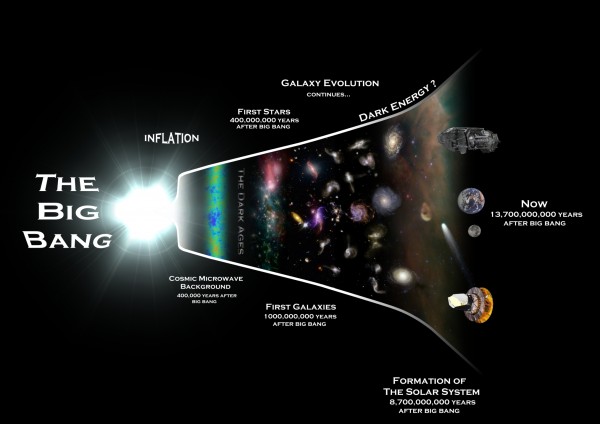
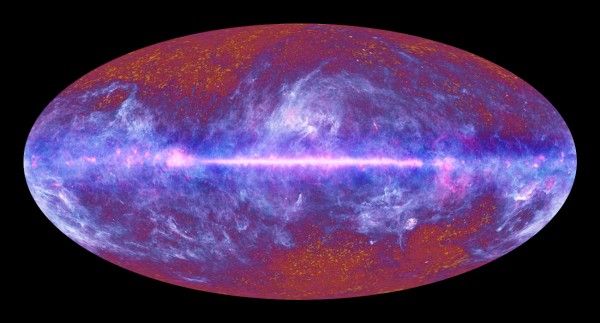
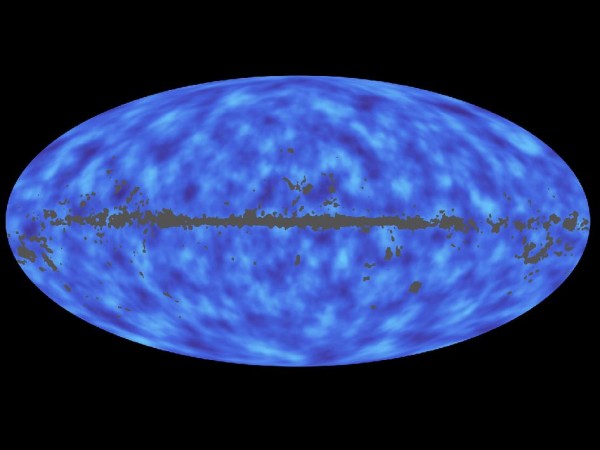
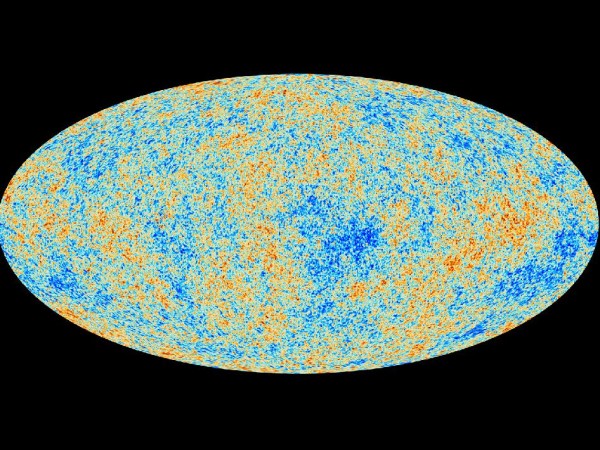
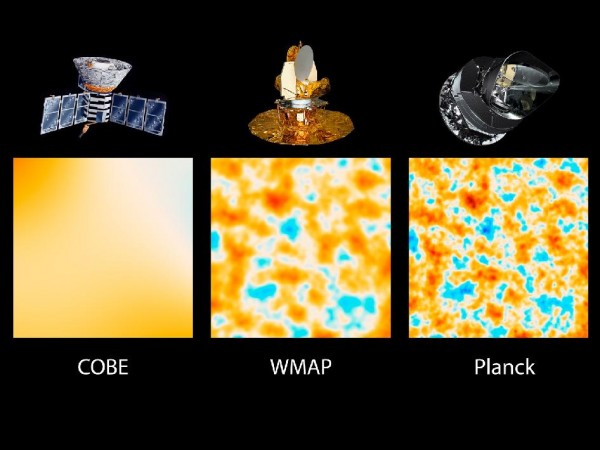
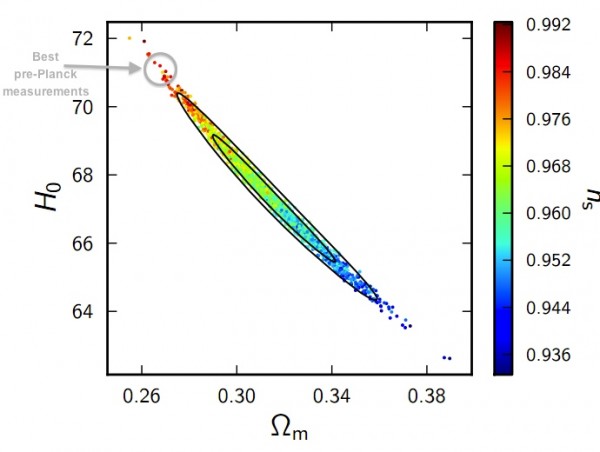
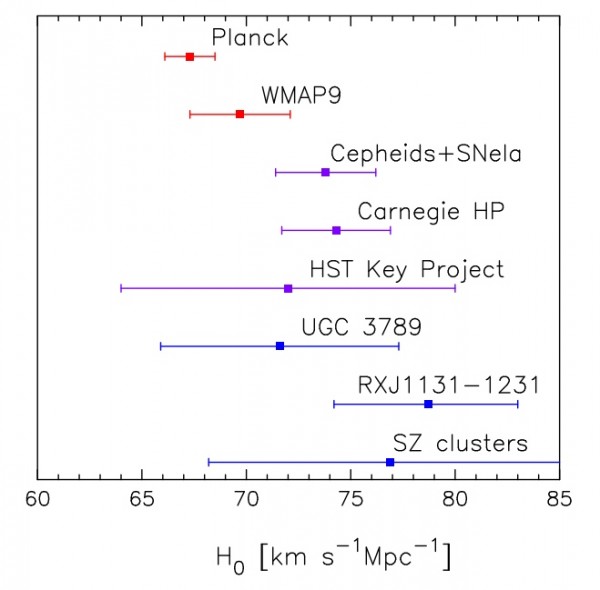
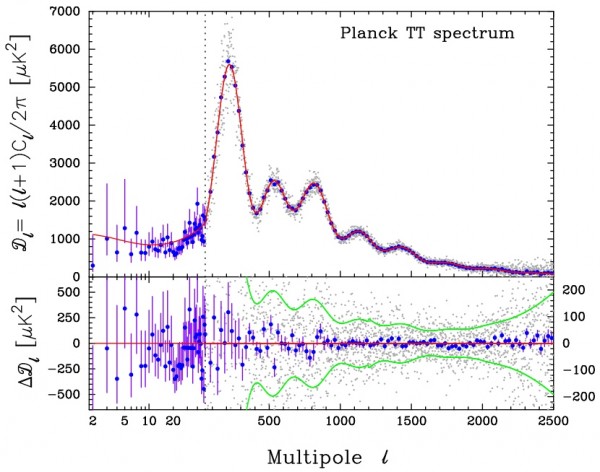
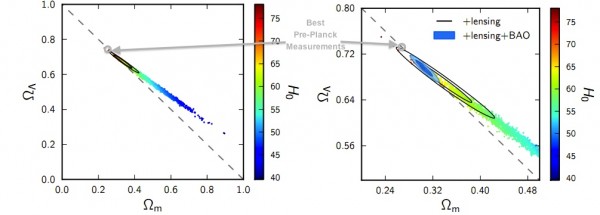

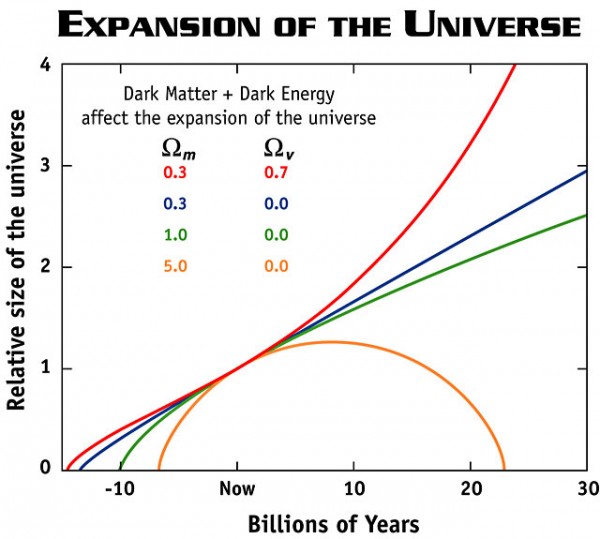
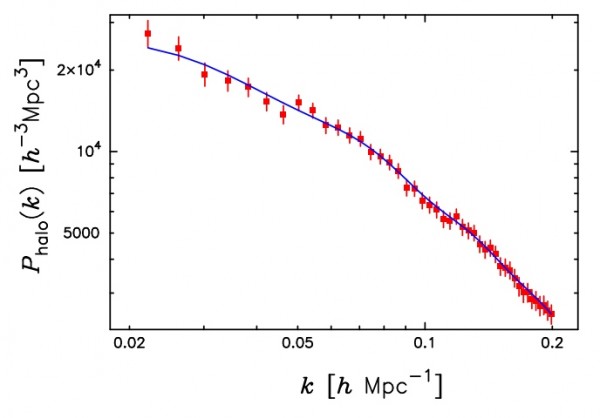

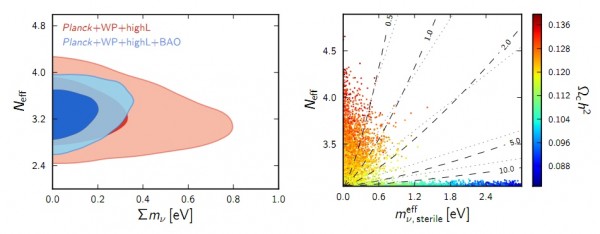
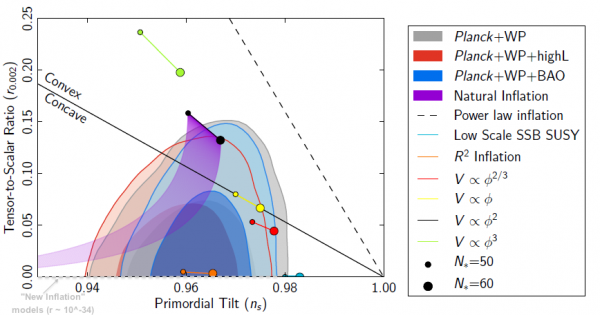
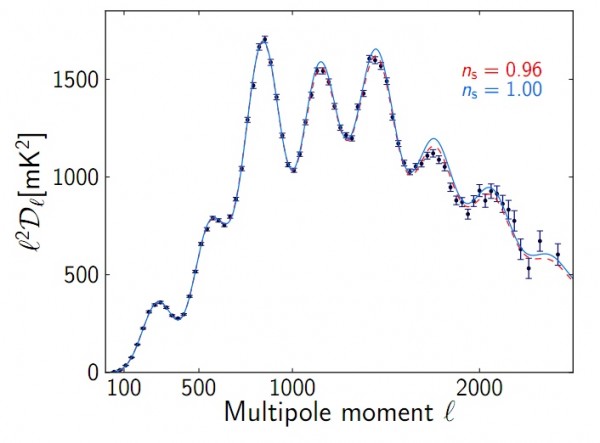
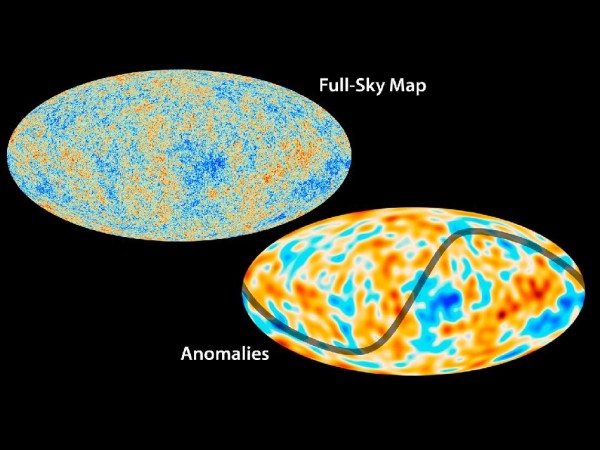
Is there a recording of the NASA conference? I only caught the last few minutes of it :(
Is the axis of evil thought to be a measurement issue / failure to remove foreground artifacts due to the plane of the solar system? Seems crazy unlikely that the universe has cosmological-scale features aligned with the plane of our solar system.
Can anyone comment on whether there are still signatures seen in the CMB that could possibly be related to bubble universes, or did all that turn out to be wishful thinking?
Oh how I wish I too could begin a sentence: “Much later, when I discussed the problem with Einstein ..."
Become a medium and you can claim it..!
I already did and I still haven't talked to Einstein!
Oh, wait... no, I'm thinking of "mediocre".
Well, better than being rare.
Ask the poor bloody siberian tiger.
Not a shag for MILES.
:-)
Thank you for going to through all the data and putting it into laman's terms for us. In record time too! Fascinating stuff.
*layman's
True dat, Nathan Burns. Kudos to Ethan.
I have a question about the Hubble constant: What does this mean for those measurements of the constant that are incompatible with Plank? Especially the Cepheid + SN1a measurement.
I'd imagine that Cepheids are near enough that relative proper motion alone could throw it off some. Supernovas are used out to large enough distances I wouldn't have thought that could matter. Is it because of white dwarf collisions resulting in Type 1a supernovas with greater than expected intrinsic brightness so we would calculate them as being closer, but with a higher redshift ergo a faster Hubble constant?
Thanks.
Followup to my comment from yesterday. The foreground subtraction, which you show in your fourth figure, appears to apply only to Planck's determination of the distribution of matter, and not to the CMB spectrum itself (which doesn't have any of the grey holes). Is that correct?
Ken Durden @1, I wish we knew. I've never been one to worry about the large multipoles -- they're just an example of one realization of a distribution and there's nothing particularly worrisome -- but the rather pronounced difference between the two hemispheres with respect to the solar system are just a little puzzling.
Doug @3, there never was any evidence for that. If it hadn't been proposed by as big a name as Roger Penrose, no one would ever have paid attention to such a capricious claim.
Nathan and CB, you're welcome. CB @13, the Cepheids are used to anchor the cosmic distance ladder; either H_0 is actually as low as Planck says and there's a systematic error somewhere (or in multiple places), or there's really something funny going on with the Universe. But my money is on systematics; "standard candles" have, upon every further investigation, turned out to be not nearly as standard as we had hoped.
Michael @15, I deftly avoided your question from yesterday because... the galactic foreground subtraction is hard, and well beyond my area of astrophysical expertise. The CMB spectrum is best measured away from the plane of the galaxy; it's part of the reason why high-multipoles (large angular scales) have error bars that are so much smaller than the low multipoles. There are more data points, but also there are plenty of reliable points that don't need to be modified/thrown away. The grey "mask" is for points that really could not be used; at some point, no matter how good your foreground subtraction is, you're still swamped by astrophysical systems within the galaxy.
As far as I know, the biggest thing that the "fourth" figure allows -- that is, what understanding the matter distribution (from the ISW effect, etc) does -- is it allows you to take into account the effects of gravitational lensing, and reconstruct the CMB without the gravitational effects of the intervening matter since the surface-of-last-scattering screwing you up. See here: http://photojournal.jpl.nasa.gov/catalog/PIA16880
Hi Ethan, that's a very nice write-up. One point, though - the nine (not seven) Planck bands are at 30, 44, 70, 100, 143, 217, 353, 545, and 857 GHz. Although the CMB is effectively invisible in the upper two submillimeter bands - perhaps this is what you meant?
Best wishes,
Peregrine
I appreciate the rush to publish, and the article is great, thankyou - however a small request:
There are many visually appealing plots, but without some indication of what they show, the linkage to the surrounding text is opaque, at best. Some even seem to have the axis labels cropped, which makes it harder to even guess.
A few words in each caption describing what is being shown (axes and quantities and relevant tips, not full interpretation) would make them much more meaningful and put them in context with the conclusions discussed in the otherwise excellent article.
"The Big Bang — the prediction that the Universe started from a hot, dense, rapidly expanding state — tells us where our cold, star-and-galaxy-rich, slowly expanding Universe full of matter and energy comes from" - uhhhh, no it doesn't
My brain was elsewhere reading that intro tease; your comment reminds me how INSANE a sentence like that would be :)
chuckinmontreal
March 21, 2013
Oh how I wish I too could begin a sentence: “Much later, when I discussed the problem with Einstein …”
In 1999 I introduced the fundamental equation of unified field theory. It predicts the Hubble constant to be 69.734(4) km/s/Mpc.
R. W. Kuhne, Modern Physics Letters A 14 (1999) 1917-1922
http://arxiv.org/abs/astro-ph/9908356
R. W. Kuhne, African Review of Physics 6 (2011) 165-179
http://aphysrev.org/index.php/aphysrev/articl/download/460/211
http://lamp.ictp.it/index.php/aphysrev/article/download/460/211
http://vixra.org/abs/1103.0104
Now the Planck Collaboration has confirmed this value,
H = 67.3 +- 1.2 km/s/Mpc
Planck Collaboration, P.A. R. Ade et al.,
http://arxiv.org/abs/1303.5076
Within the two standard deviation error bar the theoretical prediction and the observed value are identical.
uuuh, yes it does.
The Hipparchos study changed the distances to many stars by up to double (maybe more in a few cases). Extinction by dust made a difference to some. Necessary correction for atmospheric extinction for others.
There's liable to be a bit of systematic error on both. It generally seems to work that way in astronomy.
Though because standard candles have never been studied except from a long long long distance away and from models of stellar evolution (and we already have an anomalous neutrino flux from our Sun according to our best theories of stellar construction), the likelihood is that errors there are larger.
Often what happens is that it's taken as being another experiment's conclusion and a "Well, if that is what it really is, what has to be happening to our observations to make them concur?"
Hell, we may find that the discrepancy is some form of matter we hadn't expected to be there... :-)
Maybe.
@Ken
"Is there a recording of the NASA conference?"
Planck is a European mission, not NASA's. :)
Thanks for the review.
I understand the english words used. I wish I understood the graphs, so that I could work my brain another hour or so. It would be helpful to have a key to the symbols, and perhaps a bit more explanation of the graphs.
ALSO - usually grand experiments like this answer questions and they pose more. What are the anomalies that Planck has unearthed?
@Sinisa.. Planck is an ESA mission with significant NASA involvement.
NASA played key roles in the mission's development, and provided important contributions to data and science analyses. NASA's Jet Propulsion Laboratory in Pasadena, Calif., built critical components of Planck's science instruments, including bolometers for the mission's high-frequency instrument; a 20 Kelvin cryocooler for both the low- and high-frequency instruments; and amplifier technology for the low-frequency instrument.
The U.S. Planck team plays a major role in data and science analyses, with a primary tool being the Franklin supercomputer at the National Energy Research Scientific Computing Center in Berkeley, Calif. One of the world's fastest computers, Franklin will handle the most computationally intensive analysis jobs for the Planck team worldwide. My team at IPAC produced a catalogue of cosmic objects, called the Early Release Compact Source Catalogue, which was released to the public nine months after completion of the first sky survey. We also support the NASA Planck Archive: See http://planck.caltech.edu and http://irsa.ipac.caltech.edu/Missions/planck.html.
Regarding the axis of evil, could there be a tiny bit of dark matter "dust" orbiting our sun which is causing a bit of lensing? Most likely nonsense, but thought I would ask. If that were the case, I imagine it would be detectable by other observations.
Great article, but I was wondering if you could explain what all the graphs you posted actually *show*? You explain what they mean, but I have no idea how you get from the lines and regions shown on the graph to your explanation :)
Hi, Ethan! As you may see above (#31) I translated parts of your post into mine and I frankly admit it (and, of course, link to the original)
@ Peregrine
I never said NASA wasn't involved, just like ESA or JSA and others are involved in NASA's missions.
But Planck was funded by ESA, built and launched by ESA. So it's not NASA's. Just wanted to give credit, where it's due.
And given that it is only a partial NASA project, why must it be a conference by NASA?
The error is assuming only the USA does science.
SL was correcting that mistake.
Hoi, is there any new data that could confirm or disconfirm stringtheory?(compacted dimension ect.)
Whatever "stuff" is going on in this sad world -- this is the kind of thing I'm happy to leave to our kids. Sometimes, occasionally, in rare instances - we got things right.
@SL, Wow... there were two media events Thursday morning - one with ESA at 10:00 CET in Paris, the other at NASA HQ, I concur - the more correct response to Ken would have to mention both!!
Yup.
So I take it you live backward in time, yes?
"Also, remember the way that error bars work: based on the Planck data, this means there’s a 68% chance that the Hubble parameter is between 66.1 and 68.5, and a 95% chance it’s between 64.9 and 69.7."
That is not how error bars work. Assuming a perfect uncertainty analysis, 68% of the measurement values should have an error bar which covers the true value, that is a completely different statement.
If you throw a perfect coin multiple times and get a fraction of 55%+- 2% for "heads", the chance that the true value is within 1 or 2 standard deviations is exactly zero. The chance that you get a result so far away from the true value is smaller than 5%.
Wow,
This seems to be a very very nice cosmology site !
I'll have to come back and read other articles too as I find time :-)
you have a way of making complex stuff understandable.
Below is another prediction I make regarding the comming results in the power spectrum from Planck.
If this universe really is expanding -as Big Bang theory predicts - one would expect it to be cooling. Even more at an increasing rate of expansion. That is, if you want to keep the laws of energy conservation intact.
The problem is that in nature we do not observe such a preference for coldness. It is very easy to set a house on fire with a single match (or with some steel wool and a 9V battery), even if it is standing in the middle of Antarctica.
If someone threatens to cool my house with something as big as a match, I am not impressed at all.
After 13,8 Gy of expansion history one would expect at least some effect showing up that this universe is slowly cooling down. There isn't.
A 5% of baryonic matter cannot significantly contribute to a slow down of this highly needed cooling in BB theory, just by changing matter into energy. There simply isn't enough of it to drive the expansion.
Therefore I suspect Planck will measure a lot of peakes and pikes in the E-mode polarization power spectrum and a total lack of B-mode polarisation.
Or we will probably spend more time on Xenon 100, Icecube and Baksan experiments, which are all showing a very convincing zero Dark Matter result.
Please spend some time instead to understanding the problem with entropy and the Second Law of thermodynamics, is my advise to the scientific community.
Nope, one wouldn't.
Gas laws apply to gases, not universes.
Please spend some time working out what you're talking about is the scientific communities' advice to you.
mfb: That is not how error bars work
No, that's how error bars work.
They also get confused with confidence limits and so the same name is used and I believe that is what's gotten you off to the wrong conclusion here.
Also inform yourself how the fire triangle works.
Here is what this ignores:
1. The ONLY theory that PREDICTS the CB temperature to 3 significant figures is the one
that says that the temperature is that of the integrated energy of all the starlight. (Hoyle + 2). The
BB theory has to be "adjusted" to correspond to the observed temp.
2. How did the BB light go through the dust if the universe is expanding? Ahhh, it is SLOWLY expanding
and the light goes round and round. That means we might see some stars more than once, right?
3. None of this acknowledges the HUGE prediction by Arp that EVERY "active galaxy" will be observed to have
ONE line passing through the galaxy and extending into space that will have OTHER galaxies on it, AND these
galaxies will have a greater red-shift the further from the active galaxy. Several examples of this are known,
and there are NO counterexamples as far as I am aware. None of this is possible if the redshift = an expanding
universe, I think.
One other thing = the analysis of the data from COBE for the primary dipole showed a clear effect and that we were moving in a specific direction relative to the distant stars. This has another name = the ether. The ether was NOT disproven by Michaelson-Morley, and PROVEN by COBE. What is the status with Planck?
Don,
Welcome to my blog and thanks for your comments. You are, unfortunately, misinformed about the successes/failures of the Big Bang and how it compares with some alternative cosmologies, such as Hoyle's steady-state theory. Here is what you miss:
1.) It is true that the magnitude of the CMB temperature is an adjustable parameter of the Big Bang, dually dependent upon the expansion rate (i.e., the energy content) and the age of the Universe. However, the Big Bang is the only theory that predicts the blackbody spectrum of this radiation; Hoyle's theory of reflected starlight can correctly predict the temperature but predicts a different spectrum for the temperature than what is observed.
2.) The radiation from the Big Bang is not absorbed by dust because the wavelengths of light are transparent to the neutral hydrogen and helium during the cosmic "dark ages," and are transparent to the neutral and ionized intergalactic medium once reionization has occurred. In other words, the absorption properties of atoms and ions are transparent to the wavelengths that the CMB radiation has. You have reached some incorrect conclusions about the topology of the Universe, which these Planck observations actually restrict severely.
3.) Arp's alternative cosmology has been discredited by quasar/active galaxy observations over the past 20 years. His predicted quantization of redshifts is no longer consistent with the observations.
And finally,
4.) The observation of the CMB dipole -- which dates to 1978 and Smoot, well before COBE in the early 1990s -- is a measurement of the Milky Way's own peculiar velocity with respect to the CMB's rest frame. These observations give us a peculiar velocity of 670 km/s, consistent with the known peculiar velocities of other clusters, groups and individual galaxies, whose peculiar velocities are often many hundreds up to even a couple of thousand km/s. But this is not evidence for an ether in any reasonable interpretation of physics; it is a measurement of our own motion through space. Planck shows the dipole to be there, consistent with what it was already known to be.
Gas laws are the heart of entropy. Gas laws therefore apply to this universe. Size doesn't matter. The laws of thermo-dynamics are scale independant.
Ludwig Boltzmann spend his whole life on his kinetic gastheory. The laws of entropy are based upon them.
Gravity is the only natural force in this universe capable of creating stars and light. Without gravity no light.
Gravity stands for contraction.
I have yet to hear a good explanation from any Big Bang theorist how it is possible that in an accelerated expanding universe entropy can increase to account for this expansion without breaking the laws of physics.
As the universe expands gravity will become less and less important. Without gravity creating enough stars and light - how can entropy increase enough to account for the accelerated rate of expansion? It can't be driven by temperature from the Big Bang, its influence diminishes also steadily.
Only with lots and lots of really Dark Energy, coming from nowhere, violating all energy conservation laws. But we have SUSY and the multiverse....
And gravity will never become important enough to stop an accelerating universe. If it is not strong enough to stop the acceleration now, how can it do so in the future? Impossible.
I have read that Planck is most likely not going to detect B-mode fluctuations, because the desired sensitivity is 10 to 30 times higher than Planck can do. So not detecting primordial gravitational waves in B and E modes will not say anything conclusive about inflation theory, nor about the likeliness of Big Bang theory, unfortunately.
The naïve model of inflation seems to be supported by Planck. Doesn't make BBT more likely however. See http://www.physics.princeton.edu/~steinh/0411036.pdf
I am not a fan of Hoyle’s SST. It cannot explain why there should be gravity in the model. Without gravity no entropy.
"Gas laws are the heart of entropy"
And glue is inherent in sticky tape. Your point?
Gas laws apply to gases, not Universes.
And gases don't cool when expanding if they do no work.
"Without gravity no light."
Wrong.
lasers can produce light without the aid of gravity.
@ Hannes
you have some serious misconceptions about what gravity does. No gravity, no light??!
In other words, are you saying you can't light a match in zero gravity? :D Seriously dude...
I thought occurred to me several years ago, and I can't seem to shake the notion.
What if we were already traveling towards C?
I realize the idea may seem a bit naive (or crazy), but try and think beyond what we seem to consider fact. There's a certain practicality to the notion.
Rather than considering the Big Bang as an explosion of sorts, consider the inverse concept of an implosion. It makes far more practical sense on many levels.
In the first fraction of a second for instance, our entire universal limits would be defined from a single point that collapses inward. From that moment, we would accelerate towards an infinitely small point, forever losing energy. The potential vastness of an infinite state has two potential directions, and while it's easy to consider the potential infinite vastness around us, it becomes much more difficult to conceive of the potential vastness inward. It must be equally as relevant as infinite vastness though.
The idea that we exploded outward is a very difficult concept to accept. For me, the reason is clear. If our entire universe is to be defined as a single point, where would it be exploding into, and why would it preference outward motion? All the nothingness that surrounded that single point would offer no physical properties to impact that point. Only the physical properties of that point itself offers any hope of change. And because the size of that point defines the entire scope of the universe, the only direction left is inward motion. In other words, I don't think that single point could possibly define something larger than itself. By definition, that single point is our universe, and contains all the energy needed to be a universe.
To make an explosive force, you need to have certain physical conditions on both sides of the problem. While it's clear that internally we would have all the energy necessary, because we exist, externally we have nothing but an undefined region with no physical properties. For that single point of energy to exist at all, its potential force would be pulling inwards against itself. For me, the logical conclusion of our beginning becomes an implosion.
Within the center of that implosion though, there really is no bottom limit, or Planck length. The Planck length is defined from physical existence, which isn't necessarily static in reality. It may just appear static from our plane of existence, or perspective. If the universe were scaling inward at a constant rate and universally, for example, how would we know?
And why the limit of C? Besides the physical side effects that we understand, what does the limit of C truly mean? If we were already accelerating towards C though, then our physical movement actually takes us away from C in the opposite direction. Physical motion from A to B is no longer as straight forward as one might think. Instead of accelerating a rocket ship for instance, we'd actually be slowing down, as our point of origin receded away from us. So our understanding of the limits of motion become inverted.
Traveling at C is impossible, because we are already accelerating towards that velocity at the maximum rate. It is that rate of acceleration that sustains our existence and defines us. The physical motion that we comprehend, is possibly inverted. As we move, we move away from C, so our limit of motion is actually C to 0, not 0 to C. At our perceived rest state, we are forever contracting inwards at an accelerated rate very near C, and as we move, that rate of contractions slows as we slow down, expanding our physical size, or gain mass.
It is the acceleration inwards that gives us the illusion of substance, because all matter is moving away from each other. The pieces inside matter are not what create matter, it's what keeps it from fully collapsing. It impedes the rate of contraction long enough to give us the illusion of substance.
Life doesn't necessarily grow up or out as we perceive. it could very well be a subtle resistance to a natural state of contraction. It would take far less energy to resist change on a subtle level, rather than fight the forces of gravity directly.
Everything we observe in the universe wants to do one thing, and that is contract and condense. It makes sense we are a mere reflection of that greater force. The Red Shift we observe may simply be us contracting inwards and scaling away from each other. It's not necessarily a result of physical motion as we think we understand. Yes, things are farther apart, and expanding from our perspective, but overall our entire universe could still headed the opposite direction, inwards.
Just a thought.
Also misconceptions about entropy. Without stars entropy won't increase? Stars are lower entropy than gas clouds, and starlight is lower entropy than the infrared light emitted by objects heated by starlight -- or other means like gravitational binding energy, because just about every object in the universe emits some amount of light.
Much like your Antarctic house fire causes a local increase in temperature from releasing stored chemical energy which then dissipates into the environment (because the real preference is for "uniform temperature" not "coldness"), gravitational potential energy can cause a temporary, local decrease in entropy.
But draw a box wherever you want, account for energy and information going in and out of the box, and the laws of thermodynamics are being obeyed.
The Big Bang does not pose a signficant thermodynamic problem. Where real problems have arisen -- e.g. black holes -- they have been treated seriously -- e.g. by working out how they can have entropy via Hawking Radiation.
The idea that cosmologists have just not thought about the thermodynamic implications of their models is as ridiculous as claiming climatologists haven't thought about the influence of the sun.
"What if we were already traveling towards C? "
Relativity means that from the frame of reference of a photon, we already are.
"To make an explosive force"
Though "The Big Bang" is an evocative term, your statement there is why it's as misinformative as "Survival of the fittest". There wasn't an explosion.
"Relativity means that from the frame of reference of a photon, we already are."
To my knowledge, no one has successfully explained this phenomena. We are not traveling at C according to physics, because this is impossible. We are expanding at approximately 67km/sec/mpc. I am suggesting the opposite. We are contracting at this rate, and our rate of contraction is accelerating. It is this constant rate of contraction which defines our current perspective of C. To move away from this perceived velocity, we move towards the constant of 0, which is fixed.
I realize the BB is not considered an explosion. However, science claims a period of inflation, which transitioned into expansion, and then later slowed down, and is now accelerating through a theoretical repulsive dark energy.
I'm saying invert the problem. Instead of inflation, we simply existed at a defined size. Instead of expansion, we have contracted over time. Instead of slowing down, we have been accelerating inwards at a constant rate. It really doesn't change the essence of the math, because we are simply inverting the problem. Nothing really changes.
What I am suggesting is that we are contracting inwards near a rate of C. When we move, we move away from that rate of contraction towards 0 motion. We can't physically reach C as we currently perceive it, because C represents 0, not 299792458mps. Motion is the constant that fuels existence, and to stop motion is to cease to exist.
"It really doesn’t change the essence of the math, because we are simply inverting the problem. Nothing really changes."
Except the expectation of all observations used to support the idea of expansion. They will all be inverted. E.g. instead of red shift proportional to distance, we would expect to see blue shift proportional to distance.
"What I am suggesting is that we are contracting inwards near a rate of C. When we move, we move away from that rate of contraction towards 0 motion."
So are you suggesting that when I am motionless I am actually moving at/near c? And so when I'm motionless relative to my chair, I'm actually moving at near c relative to my chair? Or does the "essence" of the math you're preserving not include the relativity principle?
No CB. It is a scaling process. The entire universe is condensing, space and matter. Our perception of distance would not shift to blue. We are smaller, so distance is in fact, longer, from our perspective.
If the entire universe is condensing at the same rate, everything we observe is mere perspective. Yes, when you are sitting in your chair, you are moving at or near C. But so is everything else. Perspective remains relative, or constant.
Try not to disregard the possibility, but think of how it could be possible. It's as simple as drawing a bunch of vectors in illustrator, selecting all of them, and scaling them down. The only difference would be that the objects contract at a slightly higher rate, opening up more space between them as they get smaller. There is no bottom limit of scale in space though. The universe has an infinite amount of space to contract into. Size is only meaningful to perspective.
"The entire universe is condensing, space and matter. Our perception of distance would not shift to blue. We are smaller, so distance is in fact, longer, from our perspective. "
If all the universe is condensing, then the relative amount that two points in space condense towards each other is going to be the integral of the condensation of the space between them. Even if, because of perspective, we do not notice our local shrinkage, the shrinkage of the scale of the universe as a whole would be noticeably higher. This is the inverse of universal expansion, and it implies blue shift proportional to distance.
This isn't just something that applies to hypothetical cosmologies. If you cool a metal bar so that the material contracts then the two ends will approach each other faster than two points that are very nearby.
"Yes, when you are sitting in your chair, you are moving at or near C."
I asked about motion *relative to the chair*. Motion is always relative to something. You're suggesting that when we move, we're actually going from c toward 0. Relative to *what*? When traveling at near-c by conventional reckoning, what are we traveling at near-0 relative to by your reckoning?
And why is this different than my relative motion with regard to the chair? Am I or am I not moving at near-c relative to my chair when I perceive myself to not be moving at all relative to it?
"There is no bottom limit of scale in space though. The universe has an infinite amount of space to contract into. Size is only meaningful to perspective."
An oversimplification. Assuming space-time is not quantized, you can indeed have an infinitely small region of space. However that doesn't mean you could shrink at the rate of c indefinitely. x = 1/t never reaches 0. x = d - ct. does.
"If all the universe is condensing, then the relative amount that two points in space condense towards each other is going to be the integral of the condensation of the space between them."
Everything that we physically detect is condensing, including photons. Our rate of condensing is slightly greater than space (67km/sec/mpc + acceleration). Although technically we are physically closer, perceptually we are further apart. Our observation is expansion, not contraction. Over time, distance is greater between galaxies. That distance could be a consequence of contraction, or conventional linear motion outward.
You're thinking too statically. From our perspective, a Hydrogen atom will always have an approximate mass of 1. C will always measure 299792458ms. If you could step out of the universe and look back though, our entire universe could be receding inward at an accelerated rate. The actual mass of that hydrogen atom could be a fraction of what it was a moment ago. We're immersed in the process, so we don't notice the change.
There is a potential duality in the observations. We could easily be headed the opposite direction, and would never know it based on the red shift. I'm not even sure what kind of experiment to suggest. I do know, universal scaling is possible.
"I asked about motion *relative to the chair*. Motion is always relative to something."
Not sure what you're asking exactly. A chair, sitting in a room, is already traveling at/near C( 299792458) inward (-any residual motion), as is everything else in the universe. I can't see how anything would appear differently in the observations. Nothing would really change from a perception standpoint. Understanding what the true perception is, is the challenge. Is that chair moving at 0, or is it already moving at C? I don't know for certain. That's what puzzles me.
As I said, consider the possibility and how it could work, before reaching for predefined answers. I know very well what conventional thought is on the matter. I see the inverse state as equally possible, but unexplored.
Hi Ethan,
You say, "Planck is so sensitive that the limits to what it can see aren’t set by instruments, but by the fundamental astrophysics of the Universe itself!". Could you please clarify what aspect of astrophysics sets this scale? Is it related to the free-streaming scale at recombination? Thanks.
"However that doesn’t mean you could shrink at the rate of c indefinitely. x = 1/t never reaches 0. x = d – ct. does."
Indeed, that error is a thousand years old.
Xeno's paradox.
Solved ages ago. you would have done sums to an infinite series in your maths class if you'd taken it to 16 years of age.
"To my knowledge, no one has successfully explained this phenomena"
TO YOU
However, despite this, you seem absolutely fine with everything moving at the speed of light.
Exactly how you square this circle is anyone's guess.
"We are expanding at approximately 67km/sec/mpc."
Since we are 0mpc apart from each other, that rate of us moving away from us is what?
Zero?
You betcha!
1 parsec is about 10^15m.
" However, science claims a period of inflation"
Does not follow. That "However" does not explain the thing it is written down to be "however"-ing.
"Everything that we physically detect is condensing, including photons. Our rate of condensing is slightly greater than space (67km/sec/mpc + acceleration). Although technically we are physically closer, perceptually we are further apart."
Except perceptually the distant objects would still be approaching us more rapidly than nearby ones. Even if you suggest that the rate of "shrinkage" of empty space is less than that of matter here on earth, that effect would still be dominated by the cumulative shrinkage over cosmic distances.
"Not sure what you’re asking exactly. A chair, sitting in a room, is already traveling at/near C( 299792458) inward (-any residual motion), as is everything else in the universe."
All motion is relative. You say that when at rest (relative to what?) we're actually moving at c (relative to what?) and when we move (relative to what?) our velocity is actually going from c towards 0 (relative to what?!). Please fill in the "what".
Follow on question: Does the same rule follow for motion relative to my chair?
If so, please explain how all objects at rest can be moving at light away from each other (NOT in the context of cosmic shrinkage) and what that means, and if not, then please explain your justification for abandoning the relativity principle. Thanks.
"As I said, consider the possibility"
That's what I'm doing -- accepting the possibility, and working out the implications to see if they match with what we observe in reality. They does not.
"Does the same rule follow for motion relative to my chair?"
And will it be destroyed as my arse approaches at light speed?
Really, I think andy is just trolling.
Wow - Not sure I follow what you're trying to say. If you're talking about local proximity, then of course, 0 is the answer on some levels. I'm actually suggesting matter is moving towards one another at close range, but no where near C. You know, the whole gravity thing and the strong nuclear, etc etc. Nothing really changes from what we'd normally observe though. It's not like I expect us to fly apart because I'm suggesting an alternative concept. It's simply a matter of perspective, and universal scaling. A meter is still a meter as measured from C from our perspective.
And yes, I am fine with us moving inward at/near C already. I'm simply inverting the problem.
What's your point in defining a parsec?
"(67km/sec/mpc + acceleration)"
You aren't even thinking, are you.
The first is in units of inverse time.
The second is in units of distance and inverse time to the second power.
You can't add them together any more than you can add elephant to anxiety.
"I’m actually suggesting matter is moving towards one another at close range, but no where near C."
A lot closer to zero. your feet are "retreating" from your head at 0.4*67*10^3/10^15 m/s. 2.7x10^-11m/s. Even if calculated from being at the end of your body rather than inserted rectally as seems to be the case, the value is less than 5x that.
"You know, the whole gravity thing"
I'm under the force of gravity and it doesn't produce speed.
Do you know what it is?
"strong nuclear"
Same problem.
"etc etc"
You haven't done a first, so you can't do an "And so on".
"A meter is still a meter as measured from C from our perspective."
Makes no sense.
Here, since you seem to like this sort of "deep thought", please consider the possibility of a handkerchief talking to a sheep whilst an elephant plays the Occarina. Doesn't this mean that playing cards are portals to a new dimension?
Two things about the above
1) It should be reduced by a factor of one million: it's megaparsecs.
2) That calculation was the reason for telling you what a parsec was.
No, I'm not trolling Wow.
It's a hard concept to wrap your brain around, but I can see the mechanics.
"If so, please explain how all objects at rest can be moving at light away from each other (NOT in the context of cosmic shrinkage) and what that means,"
I consider the possibility that motion is 2 dimensional. The only direction motion can occur is inward, and outward. The universal contraction is all around us. It is seen in the vacuum of space, more or less.
When you drive your car, walk, or blast a rocket to the moon, you are moving away from C. That is outward motion. The inward motion is where the constant of C is defined. It is the absolute limit of velocity, which is still being defined. A photon doesn't necessarily move towards us, we could in fact be moving towards it. It all depends on how you look at the problem. As I said, it's hard to imagine, but possible.
I'm not abandoning relativity at all. I'm inverting it. It's still relativity, precisely as Einstein laid out.
Imagine 2 points in space, approximately 1m apart. Now imagine they are both contracting inward at a rate at/near C. Would that change their physical position, even though both were traveling inward at/near C? Of course not. They'd just be getting smaller at a high rate of speed. This couldn't happen physically as we define things now though, because they'd quickly hit a bottom limit and flash out of existence. Beyond Planck.
Now imagine that everything contracts at/near C, including space and you, the observer. From this perspective, nothing would appear to change at all, not even the scale of the two points. Everything in this scenario is traveling at/near C.
To move any other physical direction creates a 90 degree bend from the inward motion which becomes outward motion, or movement away from C.
It's a weird concept, I admit. But, I see it. I see the possibility. I don't see it changing any of the current observations. It's like 2 objects in space. You're planted on one, and notice the other is moving away. Who's doing the moving? You can't answer the question unless you have a reference frame somewhere. If everything is scaling inwards like I propose, then we don't have a reference point to tell which way we're really headed. Are we expanding, or contracting? I can't say for sure.
"It’s a hard concept to wrap your brain around"
Insanity usually is.
"I consider the possibility that motion is 2 dimensional. The only direction motion can occur is inward, and outward."
Consider the possibility that motion is a flute being chewed by a gopher whilst a soprano butters toast for a frog.
"Now imagine they are both contracting inward at a rate at/near C. Would that change their physical position, even though both were traveling inward at/near C?"
Yes.
They'd bang in to each other after d/c seconds.
If they are collapsing like dust clouds collapse to form suns, then they retreat from each other at 2c until they have collapsed after potentially r/c seconds, where r is their radius. After which they cannot collapse any more.
Wow, people like you just aren't worth responding to. Seriously. All you have to add to a conversation is background noise. You don't understand. I get it.
Andy, you still didn't consider my propositions, instead adding background noise and a whine.
Here is where you should take this rubbish so people who are thinking can get ideas that are at least sane:
http://scienceblogs.com/startswithabang/2012/09/23/weekend-diversion-yo…
Wow. When you simply attack, what do you expect in return? I personally try to be cordial.
"They’d bang in to each other after d/c seconds."
No they wouldn't. You are thinking from a static perspective, which is natural. The entire scenario is simply scaling to a smaller size.
"If they are collapsing like dust clouds collapse to form suns, then they retreat from each other at 2c until they have collapsed after potentially r/c seconds, where r is their radius. After which they cannot collapse any more."
They are not collapsing like a dust cloud. The entire dust cloud, and the space it propagates in, is scaling inwards. Movement as we perceive it within that dust cloud does not change. It is still bound by all the physical laws we understand on the surface. Nothing apparent changes.
You keep thinking in terms of defined limits of scale. You see a bottom limit. I suggest there is no bottom limit. Our universe can be contained within a galaxy one moment, and the head of a pin the next. That perspective though, is looking from the outside in, not the inside out. Every piece of matter is impacted by the same constant of contraction, so the perspective remains fixed. We see parsecs from the inside. We take our measurements from apparent finite elements to define these distances, and weights. If those tools aren't fixed either though, than all we're doing is measuring relative perspectives on the universe. That perspective is fixed.
It's a fact, matter is mostly nothing, or about 98% nothing, and 2% something. What is it? What gives it the illusion of substance? What's it's made from? I suggest, nothing but motion. It is the inward motion of points in space that give the illusion of substance. Matter contracts away from each other, like low pressure zones in a weather system. Substance is an illusion created from inward motion.
Once again though, I'm not claiming to be right. I only see the possibility. I see the mechanics, and can visualize how it might be correct. It is very difficult to explain and grasp I suppose, but I don't have any problem accepting this possibility. It is pretty much fact that everything in the universe is moving away from each other, or expanding. The easy and most fundamentally acceptable theory of expansion is hard to shake. I admit. But, there is one other possibility. Everything is moving the opposite direction from which we perceive. We don't have a fixed frame of reference to verify either scenario with absolute certainty, no matter how much we want to believe the current accepted belief. Light is only a frame of reference to motion, not direction. I don't think we should be so quick to judge distances based on things we don't fully understand, like light. We don't even know how it moves honestly, or what a photon really is on a fundamental level. Sure, we understand many of the physical properties through experimentation, but understanding physical outcomes is not the same as understanding its nature.
Well, for sure excellent research has been done.
I for one have not learned much. Of course, a summary of research papers that are totally unreadable (even the abstracts, introductions, conclusions and discussion); can't be very insightful.
I'm not much interested in the rah rah rah of we did it; we now understand the same old same old even better. Yawn! Yawn again.
Is there no new physical insight, an aha idea. Well hopefully the theorists are continue working on the data until aha.
Let me dig into a random paper and try to find a nugget. Paper XXIII catches my eye. I search for a few rare readable sentences.
Planck 2013 results. XXIII. Isotropy and statistics of the CMB
"Whilst these analyses represent a step forward in building an understanding of the anomalies, a satisfactory explanation based on physically motivated models is still lacking... attempts to explain the observed features in terms of systematic artefacts, local astrophysical sources of emission, or structure in the local Universe have not been successful. It is clear that these anomalies represent real features of the CMB sky. However, it is difficult to make a detailed interpretation of the anomalies in the absence of theoretical models... Clearly, these do not provide complete and satisfactory explanations for the observations, and more physically motivated models should be sought... It may be that the statistical anomalies currently described in this paper are a hint of more profound physical phenomena that are yet to be revealed." So say about 200 Planck scientist collaborators in this otherwise totally unreadable paper.
I really have no idea what they are talking about in the detail.
But it seems that though they know what they are talking about in the detail; they admit to having no satisfactory physical explanation and can only hope for a "more profound physical phenomena that are yet to be revealed."
Yep the last 10 words of this paper are:
"more profound physical phenomena that are yet to be revealed."
Of course I quote out of context; how could I do otherwise, I don't understand the papers.
Well I too am disappointed. I want "profound phenomenon.. to be revealed" or "satisfactory" not an "absence of theoretical models".
I can not imagine these scientists' exhaustion, their work gruelling and with such anticipation (i.e. "cosmologists have spent the past decade waiting"), and yet the Planck collaboration reports only modest results: a few tweeks, a few decimals of precision in so many unreadable papers.
Exciting papers are readable not camouflaged in jargon!!
Yet as a science minded person I say. Never, never give up.
Seek and find that ""profound phenomenon.. to be revealed" or those "satisfactory.. theoretical models". Thank you for your difficult and thankless efforts.
@ Andy
while I have a distinct feeling you haven't really studied physics and the body of knowledge, that you are now trying to prove wrong, some things are so wrong that I had to comment.
This isn't really about inflation, expansion and so on. This is more about elementary understanding of math and physics. And by elementary, I mean just that.. elementary school math and physics.
1. "Rather than considering the Big Bang as an explosion of sorts, consider the inverse concept of an implosion."
- ok, so how did the Universe come to be in the first place? It's all fine and dandy today, you can take an existing Universe and reverse the sign and see what happens if it's contracting. But how did it come to be spatially separated in the first place? Remember, your theory sais there is no BB as cosmology sais. So? How did we get billions of lightyears from i.e. galaxy A to galaxy B??
2. "I consider the possibility that motion is 2 dimensional. The only direction motion can occur is inward, and outward. "
- ghm... well... in 2D space, you have 4 possible directions. Like I said, elementary school math. Forward/backward and left/right. Or up/down and left/right, or up/down - forward/backward.... depending how you orient the coordinate system. So, again, something's wrong with your explanation.
3. "When you drive your car, walk, or blast a rocket to the moon, you are moving away from C. "
- this is perhaps the one that upsets me most. Because is just doesn't make any sense in language or math or physics. "c" is a number. More precisely, "c" is a number for speed. You can't move (spatially) towards or away from speed. Try? :) Make a movie and post it if you can.
Doesn't even have to be "c" ... let's use "z".. "z" is the average speed that pigeons fly. So, you go to a market to buy bread, are you spatially moving towards pigeon cruise speed or away? Is there a booth in a market store that sais "pigeon cruise speed be here" ? You should have learned from geometry in elementary school, that you can only move towards or away from a point in space. You know.. spatial coordinates. You can't move toward speed. However you wish it.. it just doesn't work that way.. just like I can't move towards the taste of ice cream. Speed is speed. coordinate is something else.
There is much more that just doesn't compute in what you wrote... but the 3 above are what made the biggest impression.
On the other hand, if you're trying to say "what if the whole universe and everything in it is moving at the speed of light"? From a practical standpoint... nothing would be different. Moving at a constant velocity or not moving at all is the same thing.
A bit of Einstein thought experiment. Imagine you are in a train moving at some velocity (forget shaking of the train etc...).. if you can't look outside, there isn't an experiment or measurement inside of the train that could tell you the train is moving. Doesn't matter if the train is moving 10 km/s or at the speed of light or standing still... For everything inside of train, everything is stationary unless they themselves move. But their movements inside the train have no bearing on train's speed or lack of it... and vice versa.
CB and WOW tried to point that out when asking "relative to what". And you said, you don't understand the question... And that's the main problem. You don't seem to understand how speed, distance, motion, space etc. behave. Yet these are basic concepts.
"Wow. When you simply attack, what do you expect in return"
Andy, when you talk complete and utter rubbish, what do you expect other than "You're talking codswallop, mate".
I notice you STILL haven't considered the possibility that motion is a flute being chewed by a gopher whilst a soprano butters toast for a frog.
What does that consideration do for your explanations?
"Once again though, I’m not claiming to be right."
You're claiming you can't be talking bullshit. You claim words and they make ABSOLUTELY NO SENSE.
Consider the possibility of a handkerchief talking to a sheep whilst an elephant plays the Occarina. Doesn’t this mean that playing cards are portals to a new dimension?
Answer this proposal.
Go on. YOU MUST ANSWER.
I'm not claiming to be right, but you must answer.
@Sinisa - Thank you for the cordial reply.
"- ok, so how did the Universe come to be in the first place? It’s all fine and dandy today, you can take an existing Universe and reverse the sign and see what happens if it’s contracting. But how did it come to be spatially separated in the first place? Remember, your theory sais there is no BB as cosmology sais. So? How did we get billions of lightyears from i.e. galaxy A to galaxy B??"
I don't think I'd leap into calling it a theory. It's more like a curious possibility.
I never said there wasn't a BB. For the sake of argument, let's just call it a point of origin though. Current theory states it began from a single point, which inflated or expanded outwards into an undefined region of space. Its expansion defines the universe. I'm suggesting the same thing really, only inverting the problem. That single point was the totality of the universe though, and it never grew beyond its original size physically. In other words, that single point of energy defined the entire scope of the universe. And instead of expanding outward, it's been contracting inward, and losing energy. It is the energy loss and dissipation that creates the separation between distant objects. Size is not a relevant concept in a dynamic universe. From the inside, everything appears static, because it is scaling down towards an infinitely small point in space. That does not make us infinite though, rather finite. The total value of the universe was 1 in the beginning for example, but now, it's .0001. From the inside though, we still see it as 1, because we are immersed in the process. It is a fixed perspective, because the process is driven by a constant.
How did it begin? No idea. Then again, nothing earth shattering in that response. No one has any idea. Quantum fluctuation? Don't know.
"- ghm… well… in 2D space, you have 4 possible directions. Like I said, elementary school math. Forward/backward and left/right. Or up/down and left/right, or up/down – forward/backward…. depending how you orient the coordinate system. So, again, something’s wrong with your explanation."
That may seem fairly apparent, but what is up or down in reality? What is left or right? If you look at the problem 3-dimensionaly, you could quantify up and down, left and right, backwards and forward. They are all the same form of linear motion. You could break motion down to 2 possible directions in 3-dimensional space to, in and out. Think about it for a moment, before you disregard the thought. If an object were traveling on a purely inward trajectory, it would be void of all conventional linear motion that we easily understand. It would plot on a conventional linear path as a single point. Any linear motion that object possessed, would deduct directly from its inward motion. The question becomes, do you think inward motion is a valid concept? That all depends on how one views 3-dimensional space I suppose. I don't think there is any limitations in physics that would negate the possibility, if the entire universe were traveling on an inward trajectory. Or more simply, scaling down to an ever smaller state. Much has to do with the way one views infinity I suppose. While it's easy to comprehend the infinite vastness outwards, it's much more difficult to imagine the same concept inwards. Current view has us expanding towards the infinite vastness outwards. Is it really so hard to imagine the inverse condition?
For me, it begins the explain the concept of dark energy. In my possibility, separation between galaxies is a natural consequence of energy loss over time, not a theoretical repulsive energy which has gained over time. I'm thinking the answer to expansion and acceleration will lie in energy conservation.
The idea of substance also starts to make a bit more sense. Matter represents points of inward motion. They move away from each other, giving them the illusion of substance. If they are traveling inwards at/near C, then it would take the ^2 of C to overcome their natural velocity inwards. Energy is related to velocity. e=mc^2. 0 motion, and e=0.
Wow - So what you're saying, is scaling is impossible. So if I use my favorite art program, and spec a 50% reduction to my image, all the pixels will immediately slam together blowing up my computer. Hmmm....
okkaaaayyyyyy.....
"I don’t think I’d leap into calling it a theory. It’s more like a curious possibility."
It's not even a possibility. It doesn't exist enough to be able to assess it as anything.
Thomas Jefferson
"Wow – So what you’re saying, is scaling is impossible."
Where?
"So if I use my favorite art program, and spec a 50% reduction to my image"
Your image will be half the size in bytes.
Total velocity this engenders: zero.
Stop wasting everyone's time and go here where your propositions will not clog up cogent discussion on this topic.
http://scienceblogs.com/startswithabang/2012/09/23/weekend-diversion-yo…
"Stop wasting everyone’s time"
Ironic...
"A bit of Einstein thought experiment. Imagine you are in a train moving at some velocity (forget shaking of the train etc…).. if you can’t look outside, there isn’t an experiment or measurement inside of the train that could tell you the train is moving. Doesn’t matter if the train is moving 10 km/s or at the speed of light or standing still… For everything inside of train, everything is stationary unless they themselves move. But their movements inside the train have no bearing on train’s speed or lack of it… and vice versa."
Isn't this what I'm saying? We are inside the universe, using objects within the universe to determine our motion. We can judge motion within the universe, but is that really a definition of what the universe is actually doing as a whole? If we could step outside the universe, what would we see? Are we expanding, or contracting? Everything we tend to observe wants to condense into black holes, or dissipate. The universe according to current views, is not only doing exactly the opposite, it's doing so at an accelerated rate. It gaining momentum, when it should be losing momentum. That's what puzzles me.
"Ironic…"
You can discuss the irony here:
http://scienceblogs.com/startswithabang/2012/09/23/weekend-diversion-yo…
Andy,
I think I get what you are saying and what the confusion is.
In cosmology, when we talk about expansion of the universe, that applies only to objects that are not bound together by any force. So - the galaxies are receding from us, but the interatomic space in our bodies is staying the same, as is the size of the Earth. So even though the universe is expanding, our "meter sticks" (or whatever methods we use to measure distance) stay the same, so we can measure the expansion rate.
You are proposing that everything, including the meter sticks, could be either expanding or shrinking, and we wouldn't know, since at any point in time the universe would be an exact scaled-down replica of itself. Yes?
And further, I think you're saying that our meter sticks are shrinking slightly faster than the inter-galactic distances, thus leading us to think the universe is expanding.
I hope I got this right.. I am mostly stating this because too many people seem to get hung up on the tiny details of your speculations, rather than the heart.
Andy
Wow and Sinisa Lazarek are correct. Yeah Wow sometimes insults; but that doesn't make him wrong. Nor does it invalidate your opinion.
But you are seriously off topic and must continue at the appropriate web site here:
http://scienceblogs.com/startswithabang/2012/09/23/weekend-diversion-yo…
Read this web site carefully.
Then scroll all the way to the bottom where my serious comment (Liars, damn liars, mathematicians, AND META-MATHEMATICIANS!!!) awaits you.
Seriously, please follow. Thanks.
I been saying all along that the BEASTLY Hubble
value should be 66.6 km/sec/Mpc.
Yes Raisin, that is precisely what I'm saying. How would we know? Sinisa's Einstein thought experiment is precisely what I was getting at. We are inside the train.
I will listen to OKThen, and refrain from posting on this thread however. And thank you OKThen for the polite shove.
"Yes Raisin, that is precisely what I’m saying. How would we know?"
By looking.
@ Sinisa Lazarek #53
You misunderstand me completely. Please read carefully.
Gravity is the only force capable of creating stars and ignite them (fusion). Without stars, no light = no entropy.
Without gravity this universe would be a dark place to stay.
Lasers are build from higher elements, they can't be formed without fusion. But stars can form natural lasers or masers (like Radio Star MWC 349).
For anyone REALLY interested in clarity regarding entropy in this universe, please read
"Gravity, entropy, and cosmology: in search of clarity" from David Wallace (june 2009).
The first sentence says it all:
'On pain of a crisis in physics, the entropy of the early universe had better be lower than its present entropy'.
"Gravity is the only force capable of creating stars and ignite them (fusion)."
Compression can do it too. See fusion reactor.
" Without stars, no light = no entropy."
Two errors for the price of one!
"Without stars, no light". Nope I have a lightbulb and it isn't a star.
"no light = no entropy". Nope, you can have entropy in a pack of cards.
"Without gravity this universe would be a dark place to stay."
So you claim. Except before the creation of baryonic matter, there was plenty of light and gravity wasn't the source of energy for it and there was definitely no stars.
The universe still had entropy, by the way.
"Lasers are build from higher elements, they can’t be formed without fusion."
Since we've already made lasers and haven't discovered how to make sustainable fusion, this is incorrect. either this is the same level as the hoary old chestnut of "what makes this spring go? the sun, because we wouldn't be able to wind the spring if we hadn't eaten and that requires sunlight for plants to grow!".
" But stars can form natural lasers or masers "
Gas clouds can form natural lasers (microwaves are still light.
‘On pain of a crisis in physics, the entropy of the early universe had better be lower than its present entropy’.
Nope, no need.
1) is it a closed system? Not necessarily, since our visible universe is expanding at light speed and if it weren't for Dark Energy, we'd be seeing more matter coming in from "outside".
2) It can be the exact same value.
Entropy is a model. The real world doesn't have to give two hoots if it's accurate.
Either.... or it's wrong.
@ Hannes
oh I read you carefully, wish I hadn't.
"Gravity is the only force capable of creating stars"
- gravity isn't creating stars. Mass shapes spacetime, matter clumps together as a result of spacetime curvature. Weather or not that mass becomes a star or doesn't is beyond gravity.
".. ignite them (fusion)"
- no, gravity doesn't do that. Nuclear forces do that.
"Without stars, no light = no entropy."
- wrong and wrong. Stars don't hold monopoly over EM radiation... sigh... and entropy has no relevance to stars.
"Without gravity this universe would be a dark place to stay"
- hint... photon's don't care where the energy that "made" them came from. Is it gravitational, kinetic, magentic.. etc... they just don't care. Like I said before.. plenty of photons in zero g, and plenty of photons created by other forces than gravity.
p.s. don't get me wrong.. of course it's because of gravity that hydrogen clouds get to condense and eventually form stars. But just as true is that many things needed to happen before we even got hydrogen to exist in the universe, and even to have gravity for that matter.
To somehow isolate gravity as THE FORCE and stars as THE OBJECTS of the whole universe is absurd honestly.
p.p.s.
And universal entropy is a much broader and complicated subject than observing how a gas spreads in a vessel, and concluding that no gas will ever get less chaotic on it's own accord.
@CB
You are beginning to understand the problem.
Boltzmann chose an ideal gas in a gravitational field [here on earth] as a starting point. This choice naturally leads to a theory where the theory itself is totally decoupled from the creation of photons. Because the molecules in an ideal gas expand isothermally. Collissions do not produce photons because there is no energy loss.
Gravity is NOT in any way involved, correct CB - agree!! It is purely about phase space. See David Wallace' essay.
And the initial conditions favour a situation where the compressed gas is at first in a low entropy state and the expanded gas is at a high state, reaching equilibrium. That is because of Boltzmann's choice.
The problem is that in Cosmology the creation of PHOTONS is chosen as a measure for entropy (-increase). That is something differently. And when all matter has disintegrated into light than finally the expansion is at a maximum, and entropy is maximized (empty space).
But the creation of photons cannot be decoupled from gravity (stars). And there we have the culprit - a gas in a gravitational field will not expand in time, but collapse. The arrow of time is completely reversed in regard to the situation above.
If we want to keep the Second Law in its present form in Cosmology this means that expansion equals an increase of the creation of photons.
But the source of creation of photons - is getting weaker and weaker (gravity) in an expanding (even accelerating) universe.
That my dear CB, does not compute!
Boltzmann kept his brain on Earth, unfortunately. He was a great scientist, but not a cosmologist.
He should have chosen the irreversibility of the creation of photons as a starting point, logically. And gravity as the natural creator of entropy.
"You are beginning to understand the problem."
And its name is Hannes Paulson...
@Sinisa Lazarek
You are right, it is spacetime curvature. And the force we call it in normal language.... gravity. May I please call it gravity?
EM forces - in a universe with solely neutral hydrogen without any gravitiational force cannot create ions and free electrons. Why would anything move?
Magnetics - the same.
Imagine a cool hydrogen gas as a starting point in a closed universe. Without gravity there won't happen much, the gas is in equilibrium. No nuclear forces, no creation of photons.
"You are right, it is spacetime curvature. And the force we call it in normal language…. gravity. May I please call it gravity?"
It won't help you.
Light occurs when a charged particle moves. Even if it's from one bound state to another.
Gravity doesn't have a bloody thing to do with it.
And gravity would not cause star formation if we didn't have friction.
"Without gravity there won’t happen much, the gas is in equilibrium."
With gravity, the gas can be in equilibrium and therefore STILL nothing happens.
"No nuclear forces, no creation of photons."
Photons are caused by electrical forces.
And a gas will produce photons without gravity's help. It just needs to absorb or emit and thats done at the electrical level. Nothing to do with gravity there.
Moving charged particles in a magnetic field will emit photons. The aurora don't require gravity to make light.
"EM forces – in a universe with solely neutral hydrogen without any gravitiational force cannot create ions and free electrons."
Yes it can.
Maybe not very many at 3K but some. They aren't the only charged particles either.
Dipole movement in a neutral bound molecule will take and give off photons without any attention from gravity.
"The problem is that in Cosmology the creation of PHOTONS is chosen as a measure for entropy (-increase). "
say what?
I think it's more a case of "say anything".
It's merely another gish gallop. hannes makes one ridiculous statement, then, to support that statement or to refute that statement being queried or refuted, makes another ridiculous statement, requiring that you spend time and effort with that new statement.
Gish gallop.
For the interested.
In LCDM cosmology, the expected ISW effect can be no greater than zero (max. 2 micro Kelvin).
If Planck will measure a discrepancy, and confirm earlier findings (up to 5 times too high), LCDM cosmology could fall.
But at the moment it seems that the authors of earlier studies are yet afraid to bring forth their findings with more authority.
The study might be more important than they realize.
See CAI et al, http://arxiv.org/abs/1301.6136
@ Hannes
you still didn't answer where you got that photon creation is a measure of entropy in cosmology.
It's not interested in explaining themselves, only stating themselves for "self-evident truth".
one thing that all the ufo is the bad test of nasa
Nothing of the above really matters, since scientists already know that Earth is the center of the Universe! All that matters is the following findings which read:
Planck Satellite Confirms WMAP Findings: Universe is not Copernican
The Modern World is Faced with the Breach of a Far Reaching Paradigm
Most cosmologists will not admit it publicly, but perhaps over a beer they would tell you what is happening. Observations over the last 50 years, culminating with the Planck satellite results (March 2013) set modern science on a counter revolution leading closer to ideas formed 500 years ago. Today’s cosmology is based on two broad principles: The Copernican Principle (we are not in a special place in the universe) and the Cosmological Principle (The Copernican Principle, plus isotropy- the view from anywhere in the universe looks about the same). Starting with early studies of the cosmic microwave background (CMB), and in recent years culminating with results from the COBE then the WMAP satellites, scientists were faced with a signal at the largest scales of the universe- a signal that pointed right back at us, indicating that: WE ARE IN A SPECIAL PLACE IN THE UNIVERSE!. (But they keep spending billions of $$$ trying to disprove this observation).
Without getting overly technical, the Copernican and cosmological principles require that any variation in the radiation from the CMB be more or less randomly distributed throughout the universe, especially on large scales. Results from the WMAP satellite (early 2000s) indicated that when looking at large scales of the universe, the noise could be partitioned into “hot” and “cold” sections, and this partitioning is aligned with our ecliptic plane and equinoxes. This partitioning and alignment resulted in an axis through the universe, which scientists dubbed “The Axis of Evil”, BECAUSE OF THE DAMAGE IT DOES TO THEIR THEORIES! This axis passes right through our tiny portion of the universe. Laurence Krauss commented in 2005:
“ But when you look at [the cosmic microwave background] map, you also see that the structure that is observed, is in fact, in a weird way, correlated with the plane of the earth around the sun. Is this Copernicus coming back to haunt us? That’s crazy. We’re looking out at the whole universe. There’s no way there should be a correlation of structure with our motion of the earth around the sun — the plane of the earth around the sun — the ecliptic. That would say we are, TRULY, the center of the universe.”
(And Krauss, and many others, are still having a hard time living with this TRUTH, that they don't even want to talk about it, much less want it to be taught it in schools).
Most COWARDLY scientists brushed the observation off as a fluke of some type, and many theories were created to explain it away, ( AS USUALLY IS THE CASE), instead of accepting the TRUTH for what it is!. Many awaited the Planck mission. The Planck satellite was looked upon as a referee for these, "unexpected (and unwelcome) results." In March 2013, Planck reported back, and in fact verified the presence of the signal in even higher definition than before!
There are cosmologists and scientists who recognize the signal for what it is, and recent articles have started talking about the need for some “new physics” to explain the results?. Even on the Planck mission website Professor Efstathiou states:
“Our ultimate goal would be to construct a new model that predicts the anomalies and links them together. But these are early days; so far, we don’t know whether this is possible and what type of "new physics" might be needed. And that’s exciting?”
Other observations have independently VALIDATED the “Axis of Evil” in recent years, and this adds CREDIBILITY to the CMB observations. These observations include galaxy rotation alignments to our tiny part of the universe . Very recent reports include observations of alignment between “sky distributions of powerful extended quasars and some other sub-classes of radio galaxies” and “a plane passing through the two equinoxes and the north celestial pole (NCP)”. Also anisotropy of cosmic acceleration in Union2 Type Ia supernova appear to be aligning with the CMB features. All this supports the contention that the Copernican Principle (and cosmological) have effectively been invalidated without even discussing the quantization of various astronomical features about us, which further support the contention.
The question is ‘what will modern science do now’? Will they INVENT more ridiculous, additional parameters to keep the current theories alive (in addition to those already added: dark matter, dark energy, redshift as expansion, big bang inflation, etc.) or will they, CONSIDER THE POSSIBILITY, that, WE ARE, in a special place, as observations CLEARLY, and UNDOUBTEDLY indicate?
SO, AWAY with more useless, ridiculous damned theories. We are the center of the universe, and GOD made it that way, you BASTARDS!!! Nonetheless, on with your show of confused, unrealistically exaggerated and nonsensical explanations of the universe and its operation, when it's all so simple: WE ARE THE CENTER OF IT ALL, you Gravitons!!
And, as for the icing on the cake, and with cherry on top: There is no GRAVITY, and the earth does not spin!!!
Good/day, night...
Steven Hawkins: “Now at first sight, all this evidence that
the universe looks the same whichever direction we look
in, might seem to suggest there is something special about
our place in the universe. In particular, it might seem that if we observe all other galaxies to be moving away from us, then we
must be at the center of the universe”.
Then he says, “There is however, an alternative explanation:
The universe might look the same in every direction as seen
from any other galaxy too”. Blah Blah Blah!
Listen Hawkins, and you all non believers, his other alternative dose not hold any water, and is a waste of time and life, since we are not in other galaxies, so by the looks of it, the only prove there is for now is the first part, and that is, that we are at the center of the universe, because from our place, we can see that the universe looks the same whichever direction we look in, or out to.
WE ARE AT THE CENTER OF THE UNIVERSE!!!
Looks like you have been working on that ' speech ' for quite a while. What a diatribe ! ! In all your rants, you have failed to show ANY evidence in regard to your belief. If you wish to name-call, then go somewhere else & let off steam. You have offered nothing for anyone to learn, other than about yourself, the buffoon. Your path to learning is certainly a very long one, so start by explaining how your feet remain on the planet if there is NO gravity.
As far as BASTARDS are concerned, it takes one to know one. You do NOT know me, so please refrain from using such terms.
Have a good life & start learning about reality.
An apology for PJ, and the rest. I will post a question for you PJ in another post on: Rocks Remember, So do We, if you don't mind answering it if you can? But first:
Don't get all puffed up PJ, you know who throws more horrible insults than the word(s) I used. But, at least, I have enough respect to say, sorry if I offended you, and for at that moment, not realizing how some can be more sensitive than others, so, for that, to all I say, it was wrong for me to do that, cause you're right, I don't know you, so please accept my apology, but please, just don't explode on me like WOWIE does...K? Just because he‘s a scientist, or whatever the hell he is, does not give him the right to insult others the way he does. I really feel bad about having called WOW, the Atomic Shit Bomb, cause, Oppenheimer never did anything to me, so, I guess you also have done nothing to me, (even though you only called me a buffoon in your last response) so again, to all, my sincere apology. But now, are YOU respectful enough to apologize for calling me a buffoon PJ? If not, well, that’s cool.
As I’ve said before, you shouldn’t get all upset because someone doesn’t explain something in a very sophisticated, scientific manner, so long as it makes sense. And if one is wrong (just like I’m sure you have been wrong many times) and we don’t make sense, well then, if you wish, then just try to explain it (to those of us who don’t have the scientific savvy which you guys obviously do have) in a manner in which we may be able to understand, at least a bit better, (so long as it makes “logical” sense in layman’s terms, cause logic, and being educated in scientific stuff, can be two totally different things) so that maybe we can come to an agreement, and if we don’t, we can just leave it at that, but without any hard feelings…o right? So, this kind of show will go on no matter what, and that's why I said...On With The Show!! I just shouldn’t have used the word bastards, so I’m sorry for that…K?
Also, if someone quotes some very well know professional who, at some time, in one way or another, admits there is a God, and then starts refuting what he just said, with a bunch of nonsensical technical, scientific gibberish which makes no sense, (a la Tyson Degrass, who’s just a clown most of the time, and who doesn’t even believe what he says, when he says or explains something) just to let all the other, also well known professionals, and who know him/them, know that he/they really did not mean what was said or implied, just so they won’t be criticized. They just lie their asses off, that’s all, and they have lots of fun while doing it, with not even giving one iota of a rat’s ass about it.
That’s my opinion on him and even Michio Kaku who explained the waving flag, which is, supposedly, on the moon, with a bunch of mucha caca in my opinion, cause when he did that, (explained) it clearly sounded like he was not feeling that great about it, when giving what he knew, was his most irrational, lame, insane, explanations, as to why the flag was waving in an atmosphere less moon environment. So, hearing those, so-called, professionals, say stuff such as all that right there, is thousands of times more disgusting, than whatever someone such as this one, or other laymen, may post here or anywhere else. And not even, YOU, should tolerate such crap from those calling themselves professionals!
As you said PJ: We are all here to learn, and to that, I also add, not just to learn stuff, but to also, “learn”, to disagree!
So, on with the show, I say, PJ!
We’re all going to die anyway.
So you have your fun,
Just like I’ll have some.
.
Good day / night...